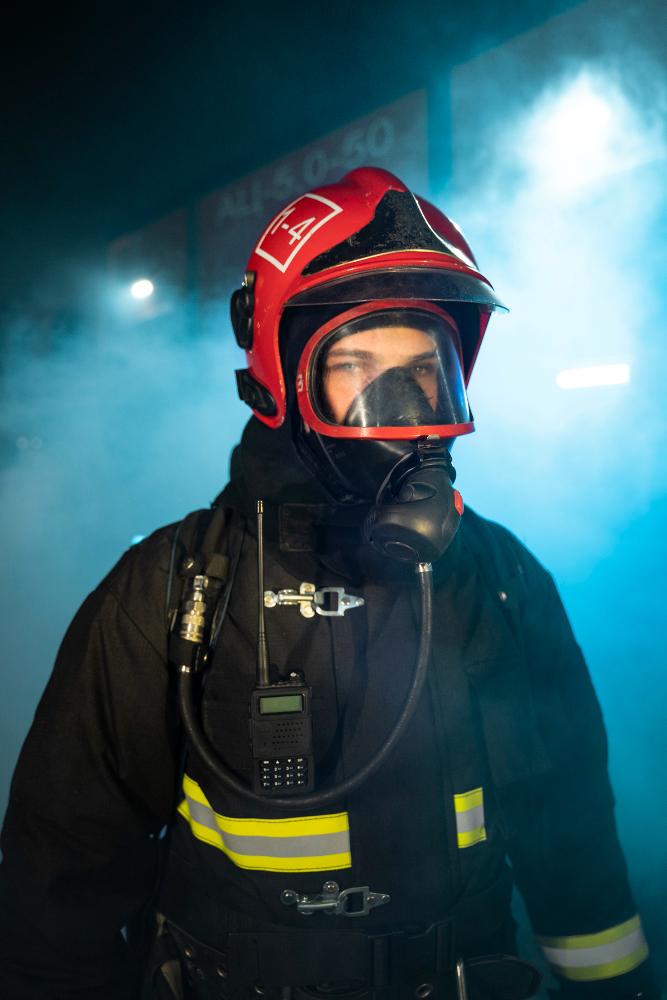In the vast expanse of the ocean, where ships navigate through both calm waters and tumultuous storms, the threat of fire looms as a constant specter. Amidst the steel hulls and salt-kissed air, the fire extinguisher stands as silent sentinels, ready to spring into action at a moment's notice. In this blog, we explore the indispensable role of fire extinguishers at sea, delving into their types, maintenance, and the critical importance of fire safety protocols aboard ships.
Guardians of Safety
Fire extinguishers are the unsung heroes of maritime safety, serving as the first line of defense against onboard fires. Compact yet powerful, these devices are strategically placed throughout ships, ensuring rapid access in the event of an emergency. Whether it's a galley flare-up, an electrical malfunction, or a fuel leak, fire extinguishers provide crews with the means to contain and extinguish flames before they escalate into full-blown disasters.
Types of Fire Extinguishers
Fire extinguishers come in various types, each designed to combat specific classes of fires. Commonly used types include:
- Water-Based Extinguishers: Effective against Class A fires involving ordinary combustibles such as wood, paper, and textiles.
- CO2 (Carbon Dioxide) Extinguishers: Ideal for combating Class B (flammable liquids) and Class C (electrical) fires, CO2 extinguishers work by displacing oxygen and smothering the flames.
- Dry Chemical Extinguishers: Versatile and effective against Class A, B, and C fires, dry chemical extinguishers utilize a powdered substance to interrupt the chemical reaction of the fire.
- Foam Extinguishers: Suitable for Class A and B fires, foam extinguishers blanket the flames, cutting off the fire's oxygen supply and cooling the fuel surface.
Maintenance and Inspection
Ensuring the reliability and functionality of fire extinguishers requires regular maintenance and inspection. Ship operators adhere to strict regulatory guidelines and industry standards, conducting routine checks of extinguishers to verify their pressure levels, seals, and accessibility. Highly trained crew members and certified technicians perform inspections, conduct refills or replacements as needed, and maintain detailed records to track compliance with safety regulations.
Fire Safety Protocols
Beyond the presence of fire extinguishers, effective fire safety protocols are essential to mitigating the risk of onboard fires. Ships implement comprehensive fire prevention measures, including regular equipment maintenance, fire drills, crew training, and the installation of fire detection and suppression systems. In the event of a fire, crews follow established procedures, initiating emergency response protocols and utilizing fire extinguishers in accordance with their training and the nature of the fire.
Continuous Vigilance
Fire safety at sea demands continuous vigilance and preparedness. Crew members remain ever alert to potential fire hazards, promptly addressing any signs of smoke, heat, or unusual odors. Regular training drills simulate emergency scenarios, allowing crews to practice their firefighting skills and familiarize themselves with the operation of fire extinguishers under realistic conditions. Through diligence, discipline, and teamwork, ships maintain a state of constant readiness to respond to fire emergencies.
Conclusion
In the unpredictable realm of maritime operations, fire extinguishers stand as stalwart defenders of safety, providing crews with the means to combat onboard fires and protect lives and property at sea. Their presence, coupled with rigorous maintenance and adherence to fire safety protocols, ensures that ships remain resilient in the face of potential threats. As the maritime industry continues to evolve and innovate, fire extinguishers remain steadfast in their mission, quelling flames and preserving the safety of all who venture across the vast expanse of the ocean.

